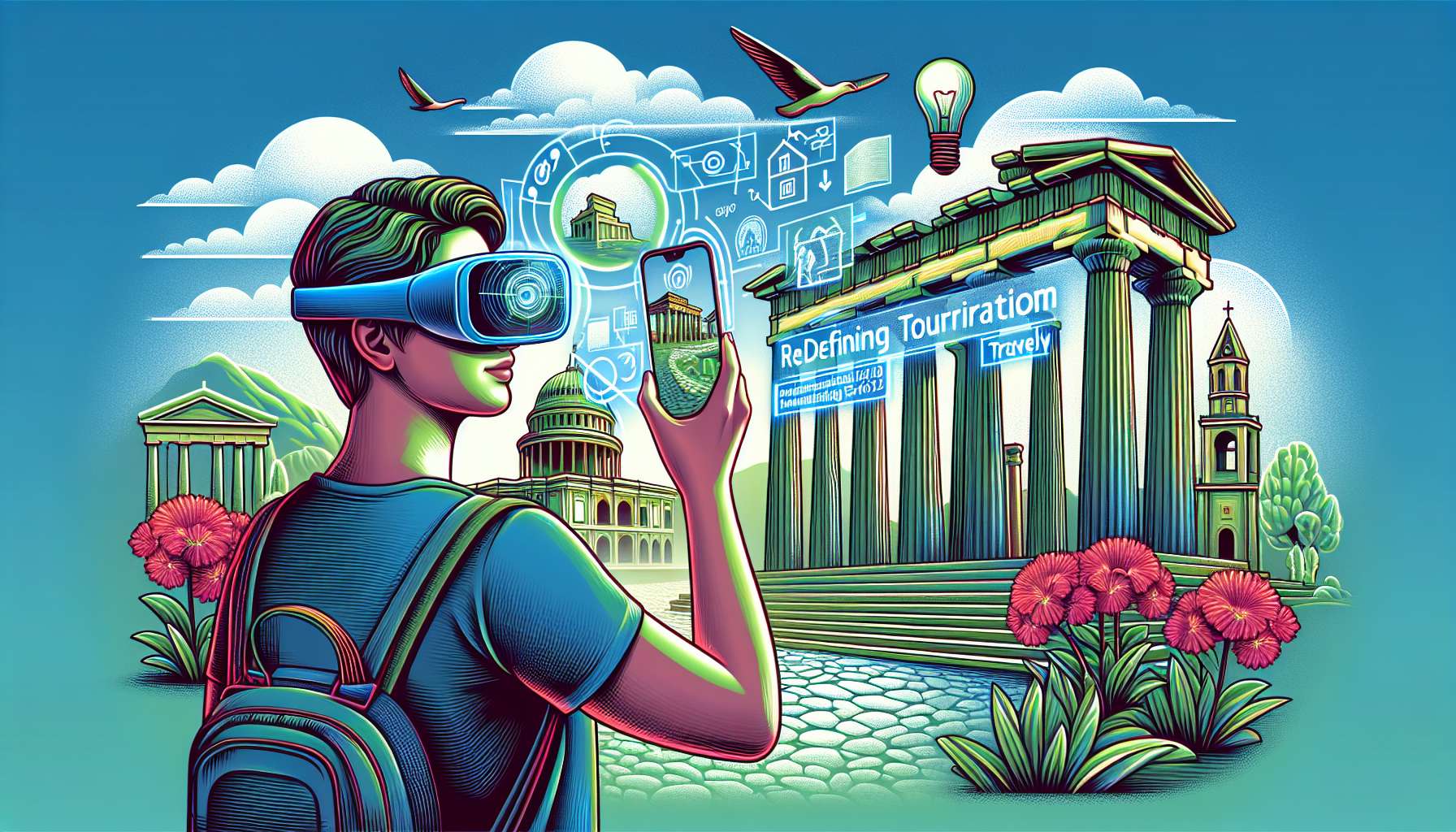Introduction
Augmented reality (AR) has emerged as a groundbreaking technology that has the potential to revolutionize various industries, including tourism. By overlaying digital information onto the real world, AR enhances our perception and interaction with the environment, offering unique and immersive travel experiences. In this article, we will explore how augmented reality is redefining tourism and transforming the way we explore new destinations.
Virtual Guides and Interactive Maps
One of the most exciting applications of augmented reality in tourism is the use of virtual guides and interactive maps. With AR-powered mobile apps, travelers can access real-time information about nearby attractions, historical sites, and points of interest. By simply pointing their smartphone or tablet at a specific location, users can see relevant information, such as historical facts, reviews, and even virtual reconstructions of ancient structures. This not only enhances the overall travel experience but also provides valuable insights into the cultural and historical significance of a place.
Virtual Tours and 360-Degree Videos
Augmented reality enables travelers to take virtual tours and explore destinations from the comfort of their homes. By using AR headsets or mobile devices, users can immerse themselves in 360-degree videos that transport them to iconic landmarks, natural wonders, and cultural sites. This technology allows travelers to preview destinations before making travel plans, helping them make informed decisions and creating a sense of anticipation. Virtual tours also offer accessibility to individuals with physical limitations, allowing them to experience the wonders of the world in a new and inclusive way.
Enhanced Cultural Experiences
AR technology has the power to enhance cultural experiences by bringing history and art to life. Museums and historical sites can utilize augmented reality to provide interactive exhibits and immersive storytelling. Visitors can use AR devices or mobile apps to see virtual reconstructions of ancient civilizations, watch historical events unfold, or even interact with virtual characters from the past. This not only makes learning more engaging but also allows travelers to connect with the cultural heritage of a place in a more meaningful way.
Personalized Recommendations and Navigation
With the help of augmented reality, travelers can receive personalized recommendations and navigation assistance based on their preferences and interests. AR-powered apps can analyze user data, such as past travel history, social media activity, and personal preferences, to offer tailored suggestions for attractions, restaurants, and activities. Additionally, AR navigation systems can provide real-time directions and guidance, making it easier for travelers to navigate unfamiliar cities and discover hidden gems.
Conclusion
Augmented reality is transforming the tourism industry by redefining travel experiences. From virtual guides and interactive maps to virtual tours and enhanced cultural experiences, AR technology offers a new dimension to the way we explore and engage with the world. As this technology continues to evolve, we can expect even more innovative applications that will further enhance our travel experiences and create unforgettable memories.








